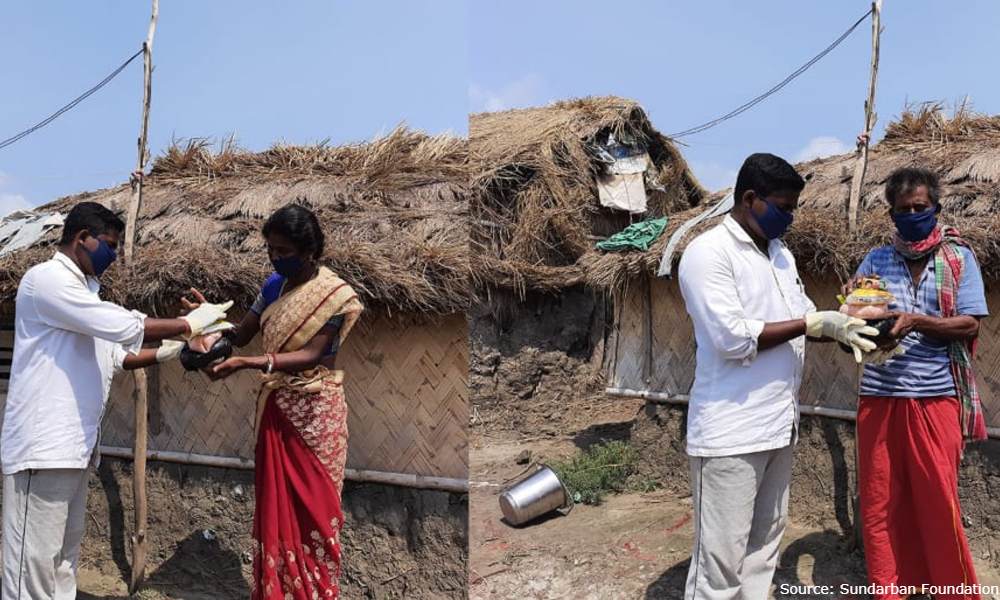Cyclone Yaas is expected to cause significant damage to the Sundarbans and its endangered mangrove forests.
Environmentalists and NGOs believe that the cyclone Yaas, set to hit the coast of West Bengal and Odisha on May 26, will cause extensive, irreparable damage to the mangroves because not much has been done to protect them.
After the destruction that the cyclone Amphan caused last year, the government had taken an initiative to plant five crore trees but not much has been done after that.
Ajanta Dey, joint Secretary and Programme Director of Nature, Environment and Wildlife Society (NEWS), believes that the government should implement a well-planned long term disaster management program. “Since the mangroves act as a natural bioshield against cyclones and hurricanes, nature-based solutions need to be implemented,” said Dey.
NEWS had built a mud dam in the Sundarban area since concrete dams haven’t proved to be effective so far. The hydro-dynamics of rivers erode the concrete and sometimes even scours its base. Dey believes the initiative should go beyond just planting trees.
“Beyond plantation, we should also look into the building and monitoring of the mangroves. Even though the forest department planted many trees, they never monitored their status through local governance,” said Dey.
NEWS believes that a proper three step program is a dire need of the hour. First, a detailed plan should be created that can be implemented over a long period of time. Then pre-preparedness and relief programs should be made ready for execution, anytime a cyclone or a hurricane occurs. If there is no room for planting trees, the government, through the local panchayats, should help the villagers in the area shift their houses back by a 100 meters to create ample space.
“Cyclone shelters need to be made keeping the population of an area in mind. The shelters need to be fortified and stocked up with food, water, poultry and other necessities,” said Dey.
Dey said that the government should invest in micro-planning and resilient components should be integrated into these cyclone-prone areas.
“The mechanism should also have a plan for financial inclusion. To make sure the villagers find a way to continue their income which will help them bounce back after a disaster strikes,” added Dey.
Prasenjit Mandal, who runs an NGO named Sundarban Foundation, said that locals have worked together to make sure damages stay at a minimum this time. “We have stocked up on water, food and other utilities. Shelters have also been created for people to live when the storm hits, ” added Mandal.

He further mentioned that the water level in the rivers has risen high and the banks are going to be affected by this. One of the prominent causes for an increase in water-levels are the phases of the moon. On days when there’s a full moon or a new moon, tides are higher. During these moon phases, the moon and the sun’s gravitational forces combine to push the ocean water in the same direction.
On May 26, the day the cyclone is supposed to arrive, a lunar eclipse is set to occur. Since a lunar eclipse only occurs at full moon, the tides are going to be higher than usual.
Dr. Swapan Mandal, an environmentalist who is a professor at the University of Calcutta, has researched on storms and their effects on the Bengal coastline for the past 25 years. He believes the timing of the cyclone also plays a key role in its impact.
He said that storms, in this area, usually happen either between mid-May and the end of June or between mid-September and November end. The latter sees a lot of rain due to an increased presence of moisture in the air and storms don’t affect the Sundarbans that much. In fact, the water flows through the canals and helps agriculture. But during the month of May, storms impact deeply.
“If the cyclone happens during May and especially on a full-moon night, tides increase to about 15-20 feet. River banks overflow and face significant damage,” said Mandal.
He added that if the storm originates beyond the Andaman and Nicobar Islands, it’s worse since now it can cover more area in Sundarbans and Odisha coastlines.




